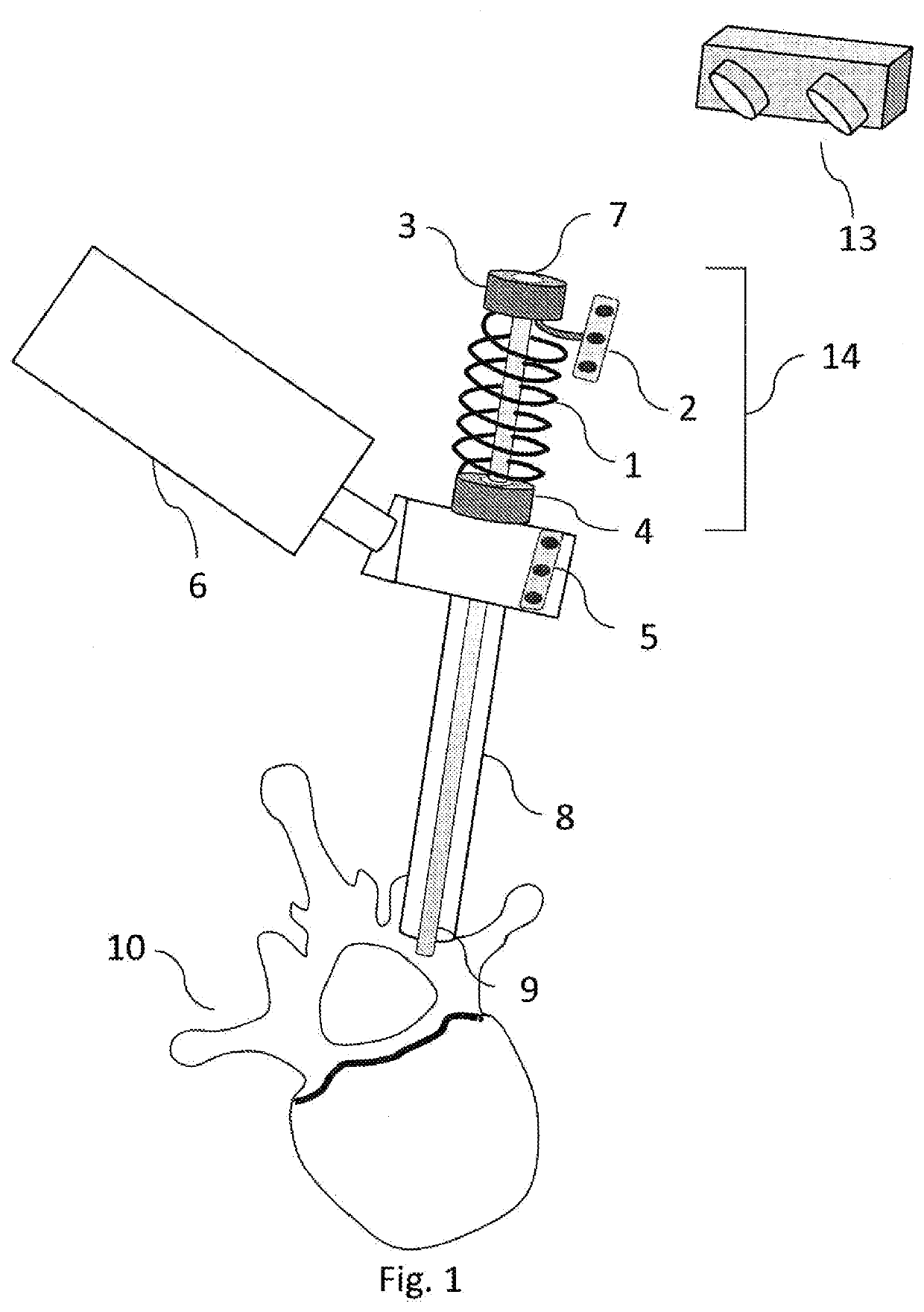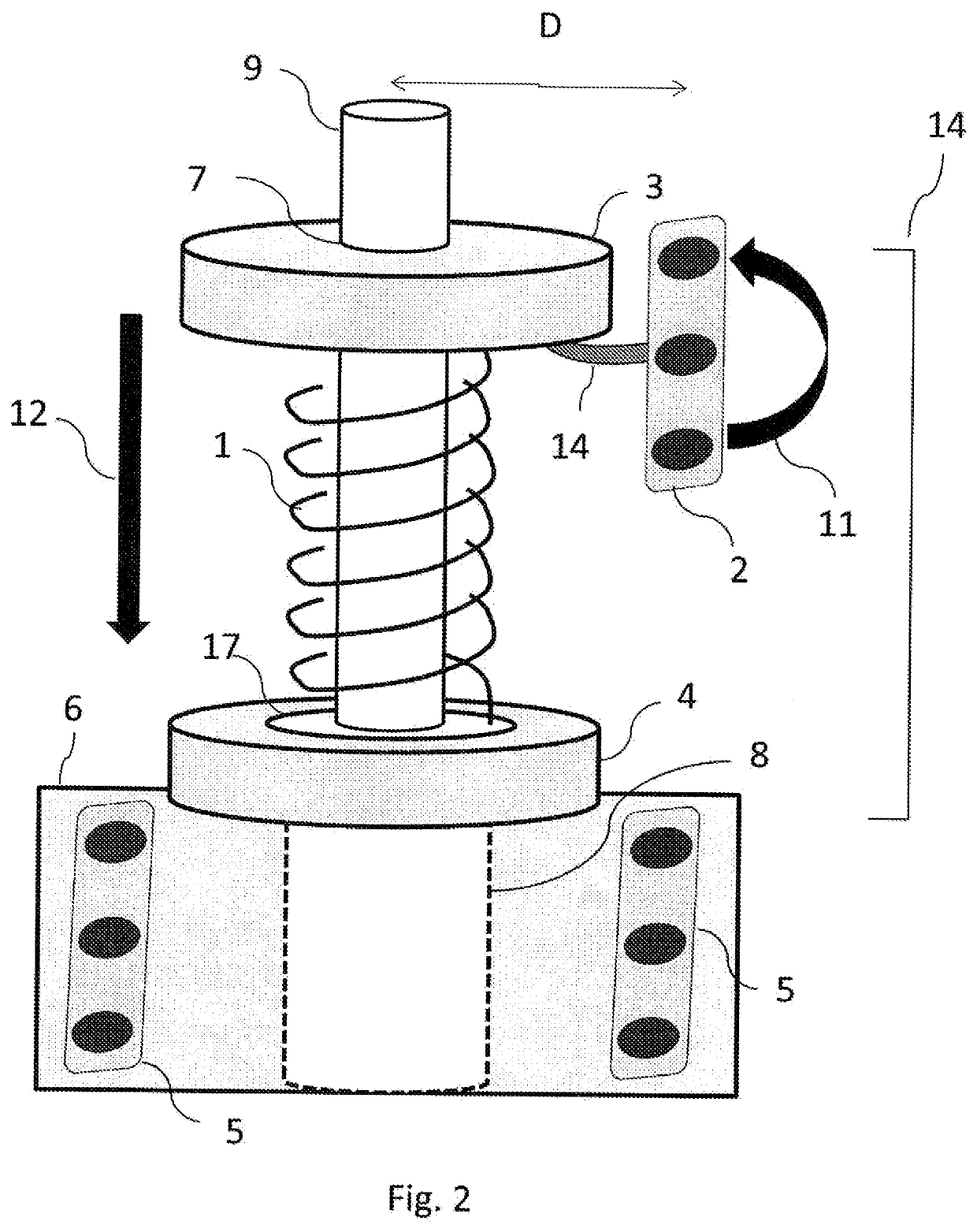Generic depth indicator for surgical navigational tools
a technology of depth indicators and surgical navigation, applied in the field of surgical navigation devices, can solve problems such as inability to adjust, inability to adjust, and inability to adjust, and achieve the effect of clear tracking line of sigh
- Summary
- Abstract
- Description
- Claims
- Application Information
AI Technical Summary
Benefits of technology
Problems solved by technology
Method used
Image
Examples
Embodiment Construction
[0026]Reference is now made to FIG. 1, which illustrates schematically one example of the generic depth indicator of the present disclosure. A spring 1 is contained between end caps 3, 4 by each of its ends. The unloaded length of the spring must be greater than the maximum distance between the end caps 3, 4, in order to always maintain the spring in a minimally compressed state end, such that the end caps 3, 4, are always at a clearly defined distance apart, for any normal mutual position of the end caps. The proximal end cap 3, contains an opening 7 into which a surgical tool 9 can be inserted and attached to the end cap 3, such that the cap moves with motion of the tool, or vice versa. The term proximal is used throughout this disclosure to relate to that end of an element closer to the operator, while the term distal relates to the end closer to the subject. To the proximal cap is attached a navigation marker 2, which can optionally rotate around the axis of the device through 3...
PUM
| Property | Measurement | Unit |
|---|---|---|
| depth | aaaaa | aaaaa |
| compressible | aaaaa | aaaaa |
| length | aaaaa | aaaaa |
Abstract
Description
Claims
Application Information
 Login to View More
Login to View More - R&D
- Intellectual Property
- Life Sciences
- Materials
- Tech Scout
- Unparalleled Data Quality
- Higher Quality Content
- 60% Fewer Hallucinations
Browse by: Latest US Patents, China's latest patents, Technical Efficacy Thesaurus, Application Domain, Technology Topic, Popular Technical Reports.
© 2025 PatSnap. All rights reserved.Legal|Privacy policy|Modern Slavery Act Transparency Statement|Sitemap|About US| Contact US: help@patsnap.com


